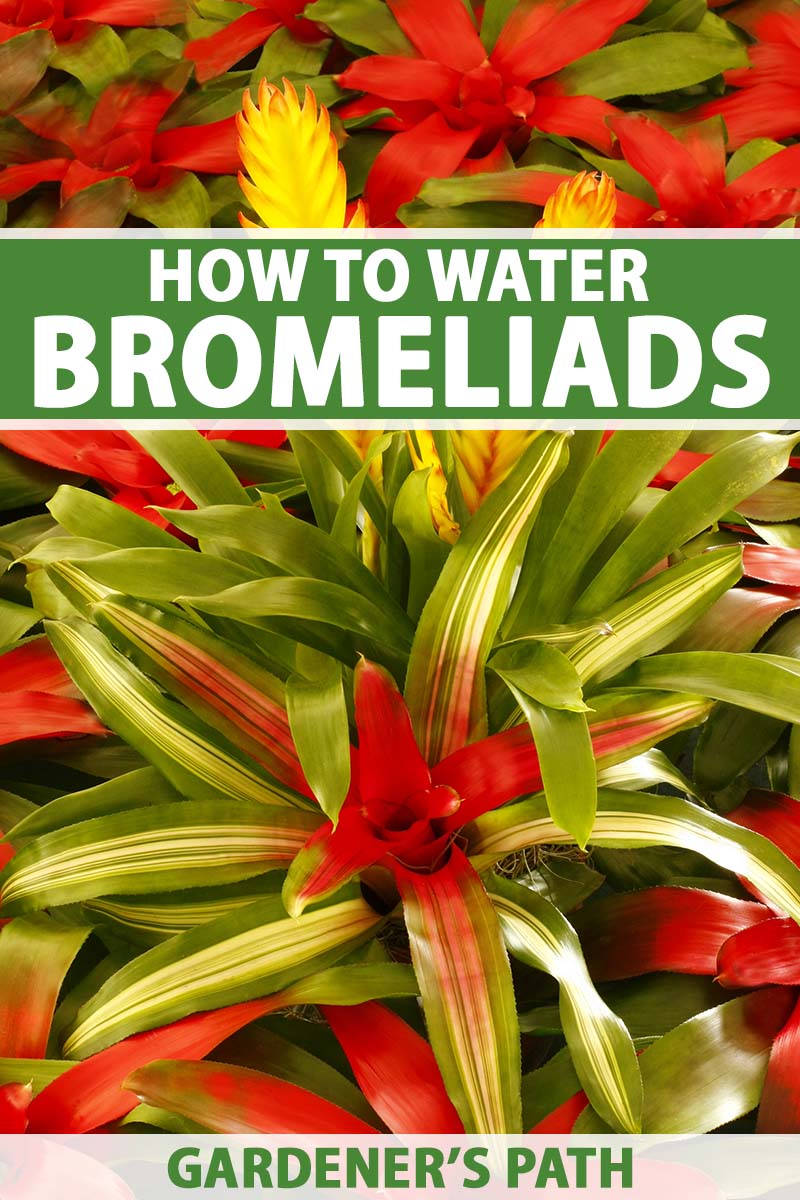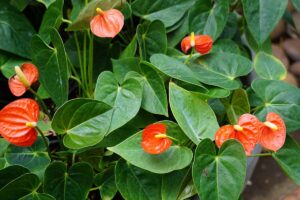Just about the only thing uniting the diverse and extraordinary group of plants known as bromeliads is that they all hail from the same family, the Bromeliaceae.
Their diverse array of forms allow them to occupy an equally diverse number of habitats.
It also means they each need to be watered a little differently, depending on their physical characteristics and the substrate they are growing in.
Some types are terrestrial, and grow straight out of the ground, others are epiphytic, meaning they make their homes up in the branches of trees. Still others grow on shifting sand dunes, or plain old bare rock.
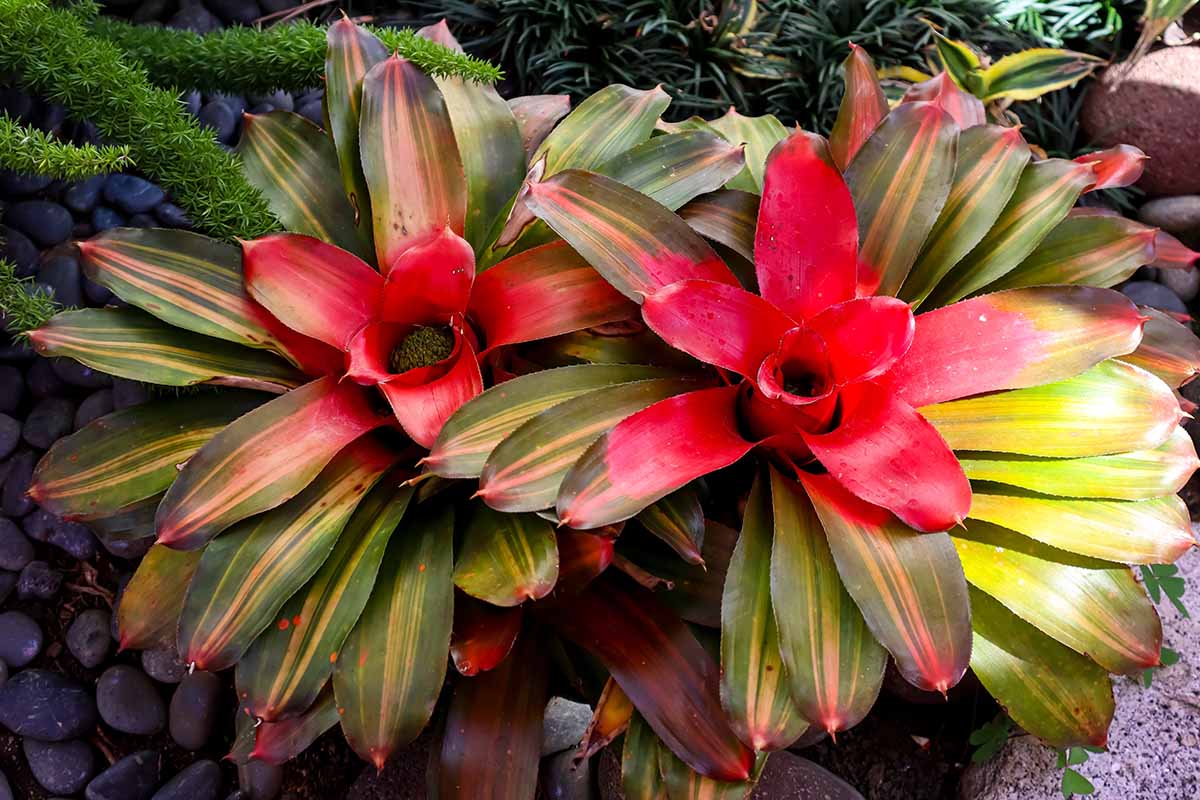
We link to vendors to help you find relevant products. If you buy from one of our links, we may earn a commission.
This group of plants come from tropical South America by and large, though there are a few exceptions.
Their long, strap-shaped leaves are spirally arranged in one beautiful whorl, making a sort of tuft. The bracts surrounding their flowers are typically very brightly colored in hues of pink, red, yellow, and orange.
Many bromeliads lack extensive root systems and have evolved various mechanisms for collecting water via their leaves.
Numerous species can collect water in their leaf bases, which form a sort of pool or cup. Others, such as the air plants (Tillandsia spp.), absorb moisture straight out of the air.
These unusual and inventive strategies mean some bromeliads don’t want to be watered the way most houseplants are.
Read on to find out how to appease these tropical novelties and keep them hydrated. Here’s what we’ll cover:
What You’ll Learn
How Much Water Do Bromeliads Need?
When trying to figure out how much water any kind of plant requires to thrive, it’s handy to know where it comes from.
Whether you’re aiming to emulate a monsoon season, constant wet weather, or the searing heat of a desert, keeping a plant’s native habitat in mind will help you take care of it properly.
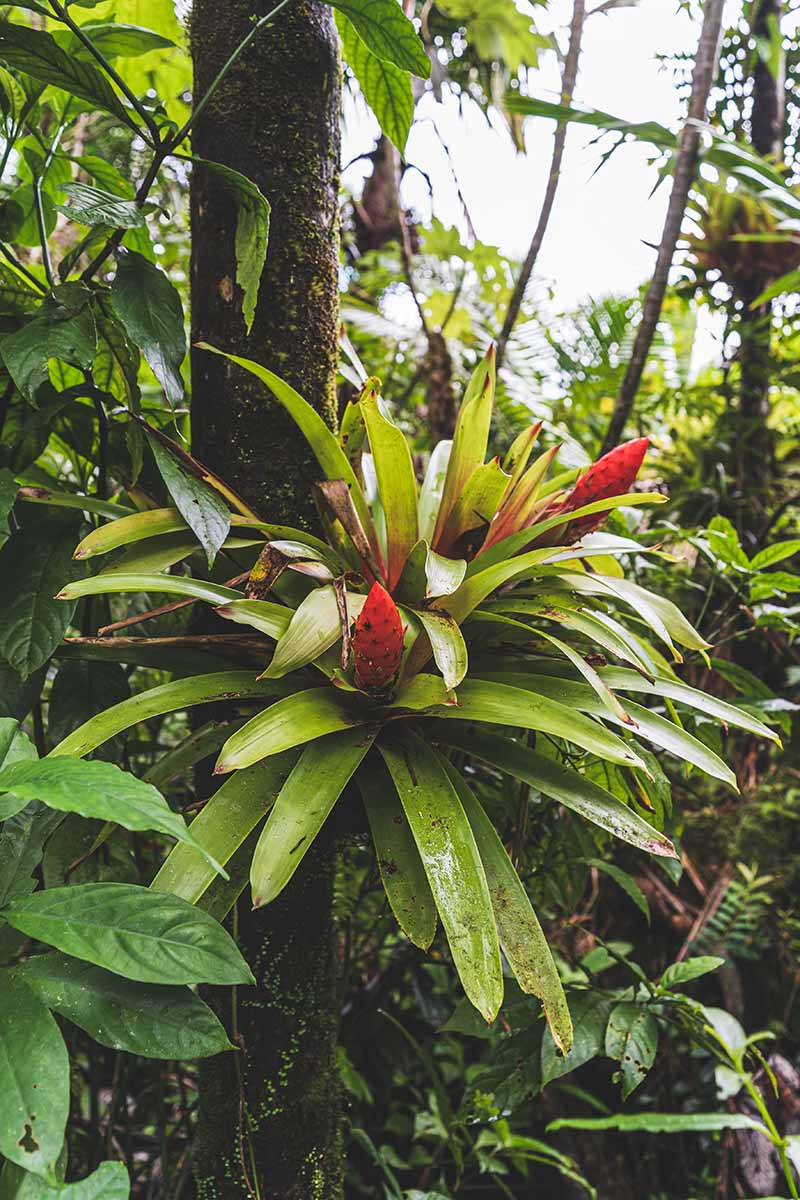
Having said that, there are hundreds of different types hailing from a variety of different habitats! Research which one you want to grow and learn about the climate it comes from.
Many of these plants prefer moist, freely draining substrates and warm, humid air. You can learn more about how to cultivate bromeliads in our guide.
Here we’ll break down the most common types of bromeliads according to how they store and absorb moisture.
Note that there is some overlap between these types, so this is a broad grouping based on their watering needs.
Air Plants
Air plants are fun little novelties you can find at any nursery with a good indoor tropical section.
Mostly grouped in the Tillandsia genus, these plants look like some kind of terrestrial octopus or squid.
Lacking extensive root systems, the species within this genus sport specialized cells on their leaves that rapidly absorb water and nutrients straight out of the air.
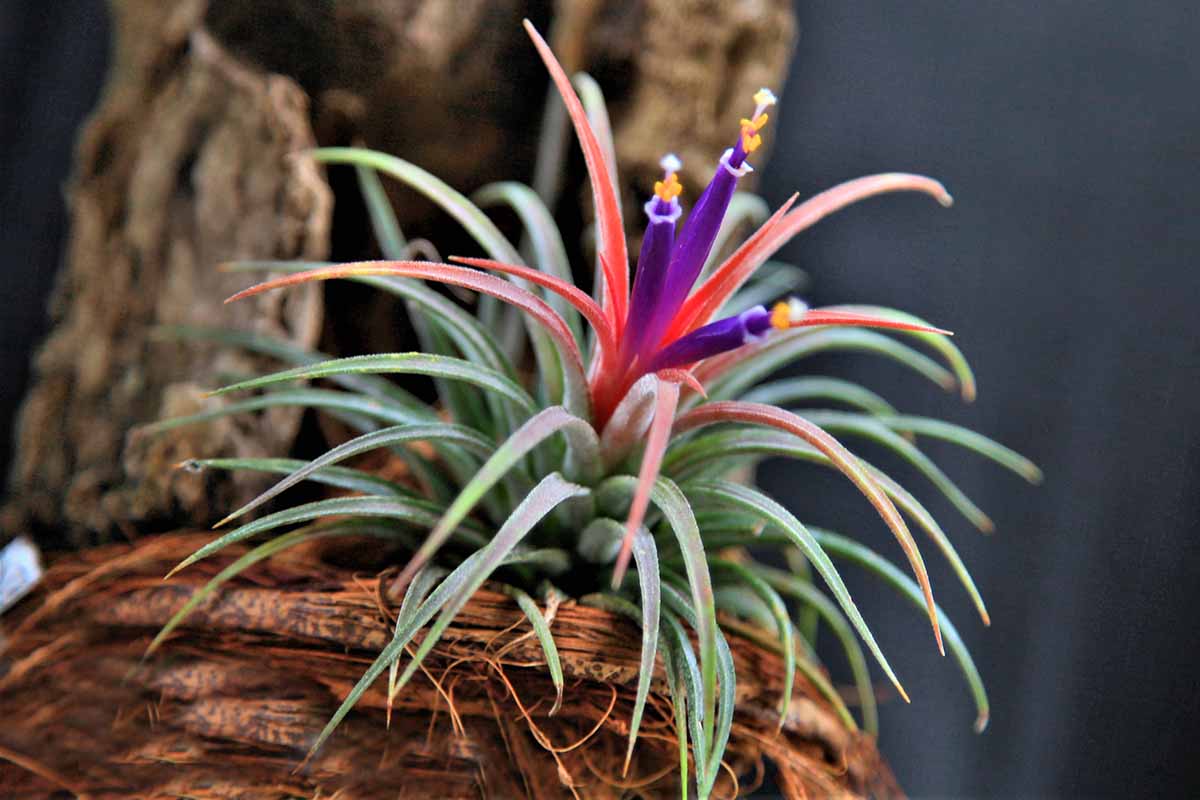
To make your air plant happy, water it less than you think you might need to.
It’s very good at extracting what it needs from the air and whatever water you provide. Keeping it in a well-ventilated spot next to a diffusely-lit, warm, bright window will make it happy.
To hydrate it properly, dunk it in a glass of water for a few seconds once or twice a week.
It’s best to use rainwater if you can, as tap water often contains high levels of minerals which can crystallize on the plant’s leaves and interfere with nutrient uptake.
If you don’t have a way to collect rainwater, bottled water works too.
Always allow air plants to fully dry out between waterings. Make sure each plant is tilted at an angle so liquid doesn’t pool in the plant’s rosette. This could cause rot.
If your Tillandsia lives in a warm, sunny locale, it may need more frequent watering. If it’s shadier and cooler, perhaps provide a little less.
After a few waterings you’ll start to be able to judge the plant’s weight and learn when to water based on its heft.
Epiphytes
The literal translation of the Greek derived word “epiphyte” is “upon a plant.” And that’s exactly what these types of bromeliads do: they grow, quite happily, on other plants.
The roots of these plants are stunted, wiry, and tough. They’re quite similar in form to those of the air plants but grow into and onto substrate that’s a little different.
Technically, some air plants can be classified as epiphytes too, but for the purpose of this guide, we will group these two types of plants separately, according to the general differences in their roots, leaves, and preferred growing substrate.
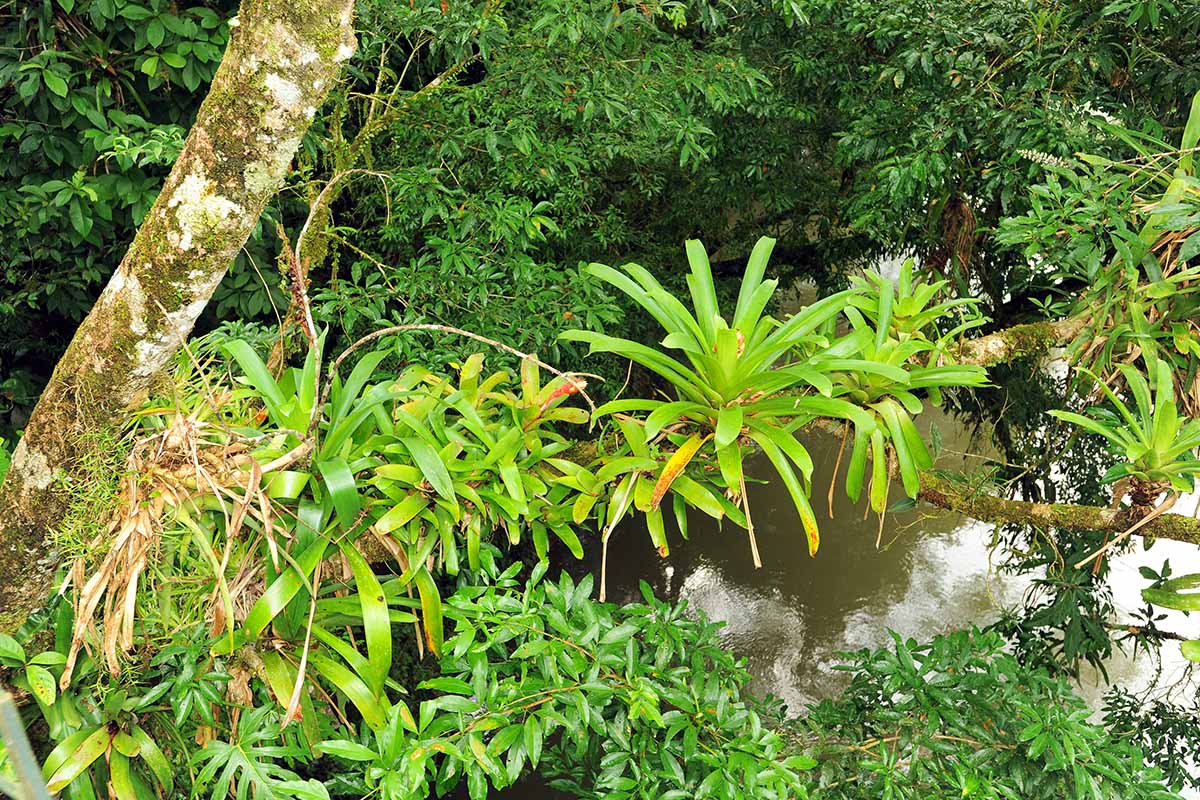
Some epiphytes live in accumulated debris in the crevices of tree trunks, while others stick on to bare branches.
The roots of these ingenious plants serve as anchors, gluing them onto their arboreal scaffolding, but they also serve as rain catchers.
Just as the air plant’s leaves contain specialized, absorbent cells designed to capture water, so do the aerial roots of epiphytic bromeliads.
Epiphytes can absorb some of the moisture in the air via their leaves too, so misting is great for these plants, particularly if the air in your home is on the dry side. If the humidity in your house is sufficient, however, they may not need it.
Finding the right amount of misting for your plant can be tricky as constantly wet leaves can invite fungal disease.
Focus first on watering the substrate and treat misting as an occasional add on. Try misting one to two times a week and if any discolored leaf spots, or white patches on the soil pop up, discontinue this practice.
If your specimen is planted in a pot, it’s likely in soil that drains very quickly and efficiently, like cactus soil, or potting mix combined with lots of bark pieces, sand, or gravel.
If you’re watering a container, do so only when the top two inches of the soil is dry, and apply generously until the excess comes out of the bottom of the pot.
Epiphytic bromeliads have reservoirs, or cups at the base of their leaves. Fill these up while watering – if possible, empty the reservoir first by carefully tipping the water out.
Watch for signs of underwatering such as wilting leaves, or crispy, browned leaf edges. If you see that happening, make sure you’re watering enough once the top of the soil dries out.
As a general rule, water until the substrate is moist throughout. See if your plant perks up with a little misting, too.
Healthy, turgid, vibrantly green leaves mean your plant is happy and adequately watered!
You can learn more about epiphytes in our guide.
Terrestrial Types
Some of the most frequently cultivated bromeliads belong in this group.
Species in the Aechema genus, for example, are popular bromeliads that grow in the ground in their native range of South and Central America.
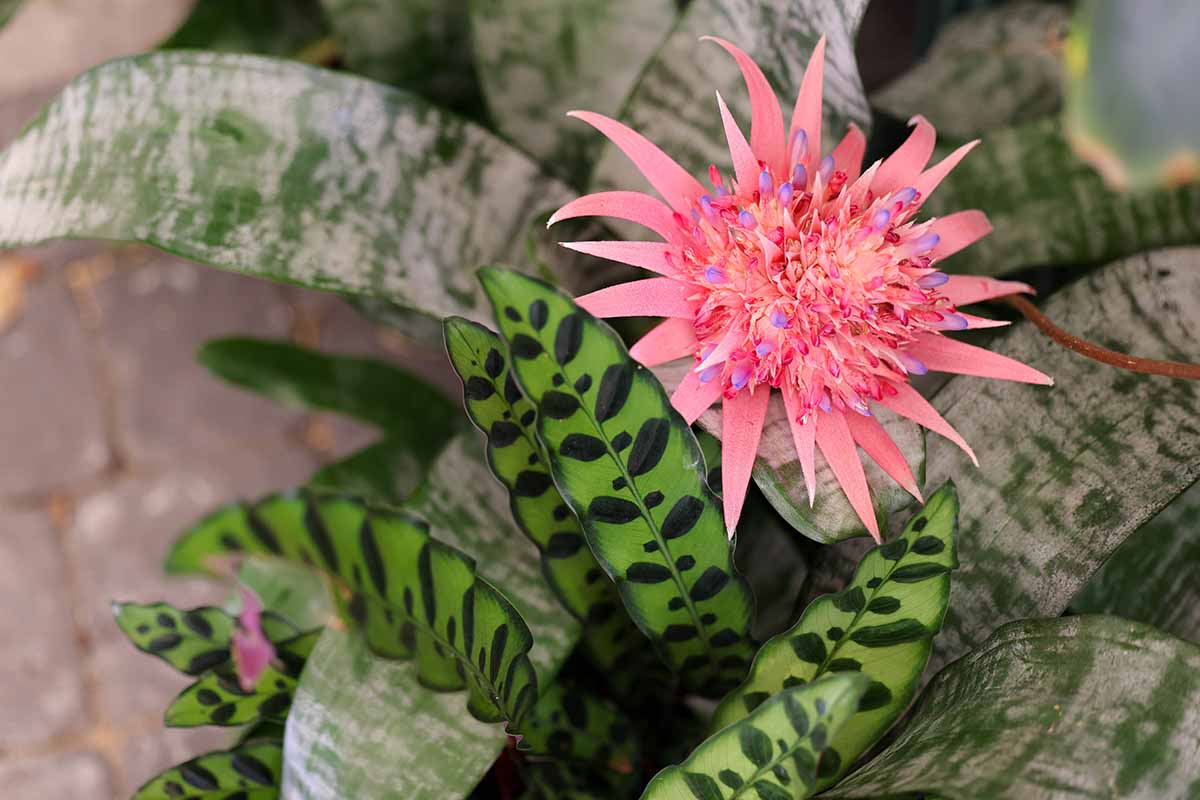
Bromeliads that grow in the ground are also referred to as terrestrial bromeliads.
Like their epiphytic cousins, terrestrial bromeliads are good at catching water at the base of the rosette, where their leaves come together in a cup-shaped whorl.
Filling and refilling this cup is key to watering success for this group.
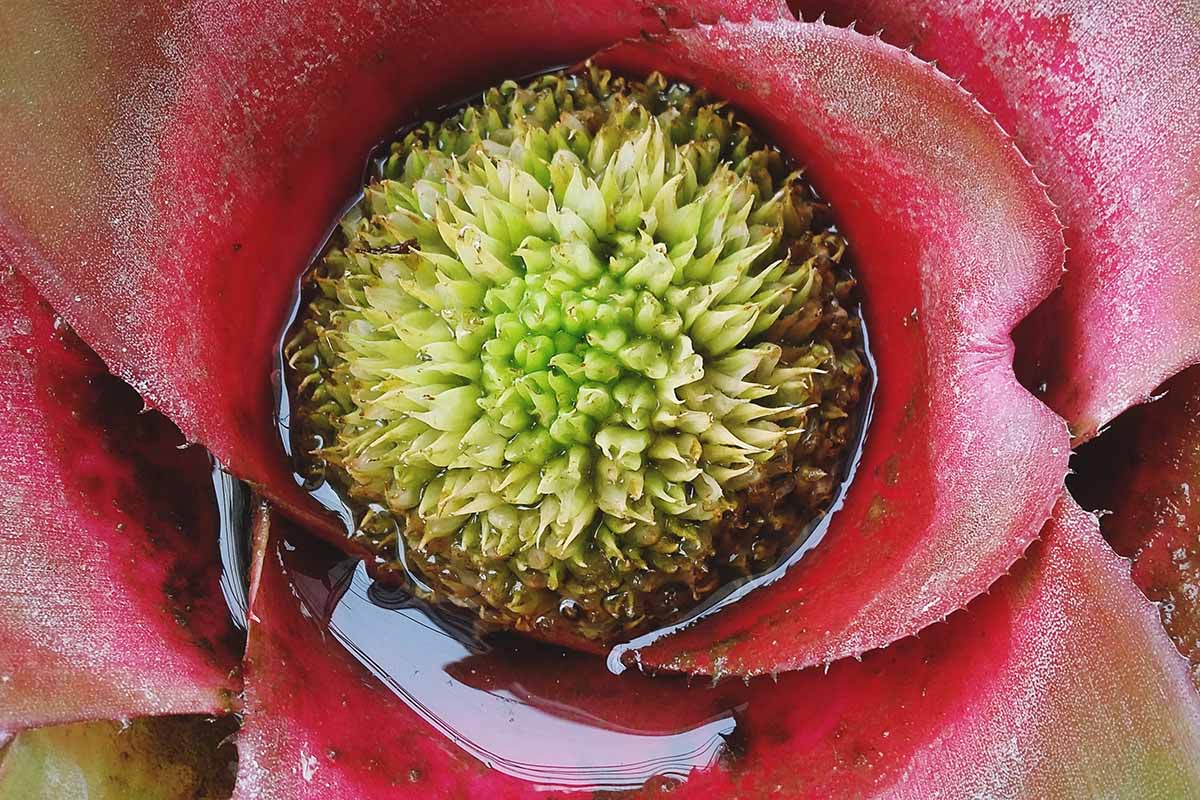
Ground bromeliads do best when grown in freely draining soils. Allow the top inch or two to dry out completely in between waterings, then thoroughly soak the soil until liquid runs out of the bottom of the pot.
In an average home environment, you might have to water once a week or so during spring and summer. In winter, while your bromeliad isn’t actively growing, you can reduce this to once every other week.
While watering, fill your plant’s rosette cup.
The saxicolous bromeliads, or bromeliads that grow on rock or sand, are often lumped into the same category.
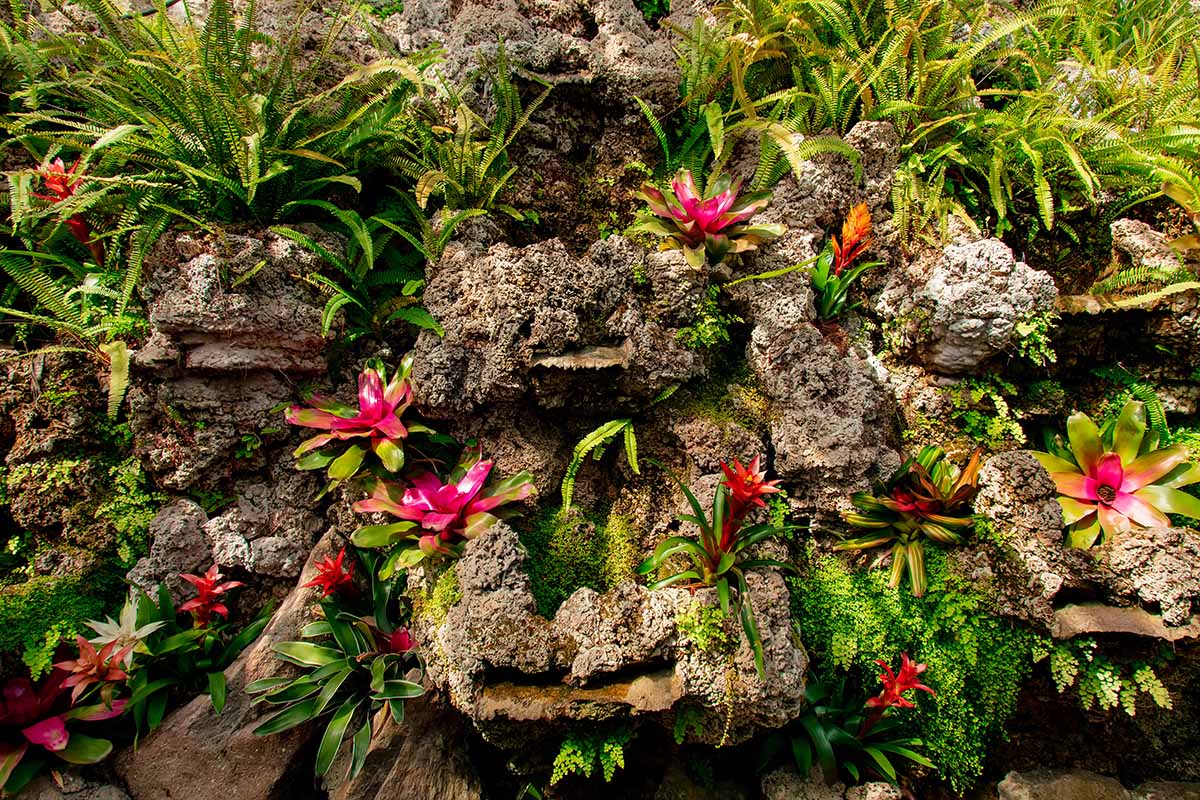
Although they can be grown in a pot in freely draining substrate, they can also be grown on a piece of bark or rock.
These bromeliads can be watered the same way as the terrestrial bromeliads, although they will benefit from regular misting, too.
As always, do your research and identify what it is that you’re growing if you want to take care of it well!
Happy Bromeliads
Although these tropical novelties are a little different than your typical houseplants when it comes to watering, they’re not as high maintenance as you might think.
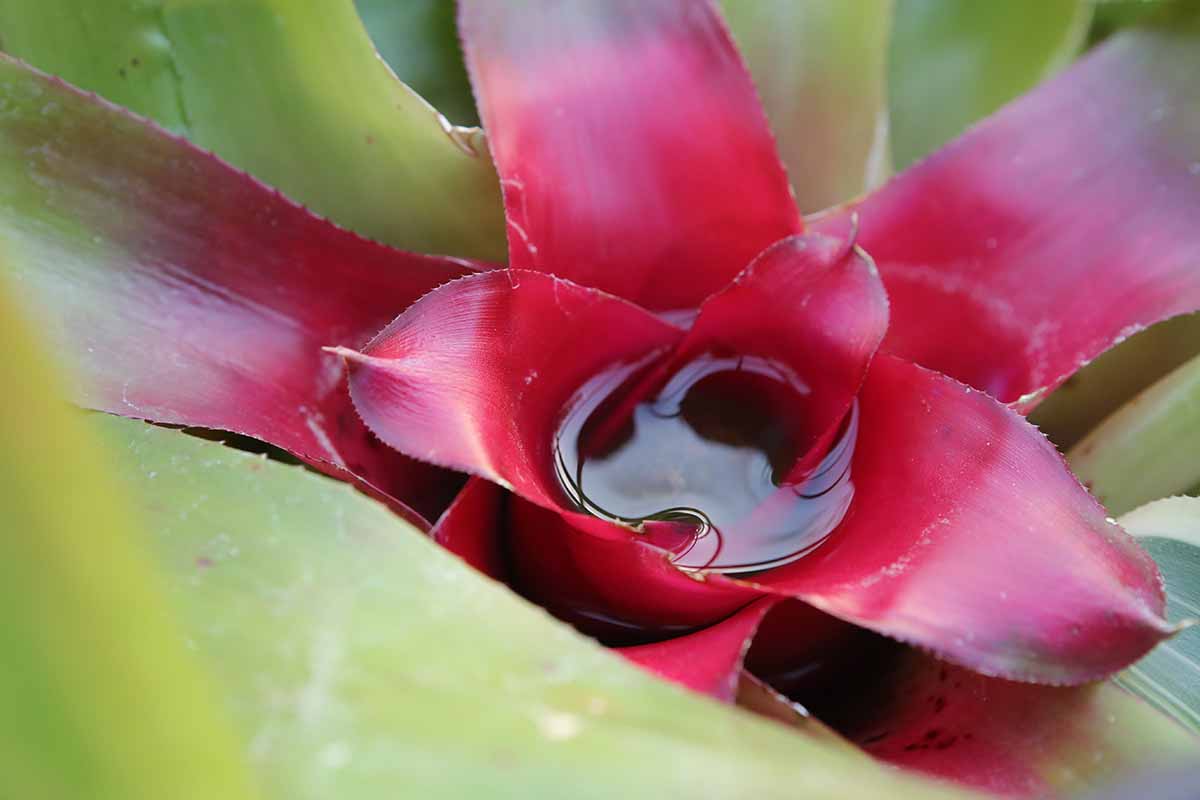
Remember to let them dry out between waterings and to not skimp on the hydration once its time.
These plants prefer warm, well-ventilated environments on the humid side, so depending on where your house falls on that spectrum, you may need to water a little more or a little less.
Keep observing, and watch your plants for signs of too little or not enough moisture, like crisp leaf margins.
Are you already growing bromeliads in your collection? What kind do you have? How frequently do you water?
Fill us in! Comments are always welcome. And if you have any questions, ask away. We are always happy to help.
And for more information about growing bromeliads, check out these guides next:
